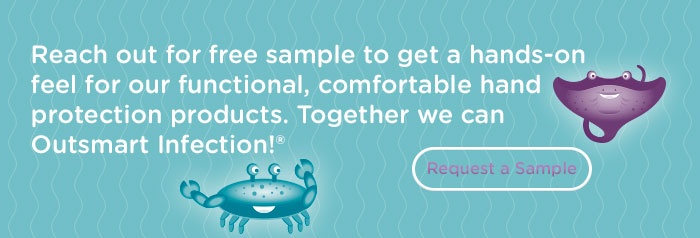According to Infection Control Today, at least 25% of surfaces in a hospital room are contaminated with pathogens that can be transmitted to a patient. Remaining alert to the hidden dangers posed by surface contamination can help keep your staff and patients safe, and your facility truly hygienic. Here are key points to keep top of mind:
Dealing with resistant strains of biological contaminants
This paper in the Journal of Hospital Infection shares that daily cleaning with detergent and water may be sufficient in most cases, as repeatedly exposing environmental flora to microbicides encourages cross-resistance to antimicrobial agents. It’s only when a patient is known to harbor a transmissible pathogen that the source recommends disinfection, rather than a simple but thorough cleaning of the environment.
Further, according to a study published in the International Journal of Microbiology, certain hospital pathogens can survive on dry surfaces for extended periods of time. As direct contact between environmental surfaces transmits the majority of these types of infections, pathogens can circulate between patients and caregivers — persisting in the environment for a long time this way. This puts infection prevention protocols under increased pressure to treat hospital rooms as an ecosystem, rather than a static environment in which scheduled cleans are all that’s required to mitigate infection risks.
The hidden danger of soft surfaces
When we think of environmental infection control, it’s easy to think of hard surfaces like counters and floors. Yet, according to Infection Control Today, soft surfaces like privacy curtains and linens can contribute significantly to cross-contamination and the transmission of multidrug resistant organisms. Experts cited in the above source recommend paying attention to infection prevention protocols in laundry practices to minimize the risk of contaminated textiles coming into contact with healthcare workers and patients. Privacy curtains were one example of a surface that often flew under the radar — often touched and infrequently changed, the article cites studies that found them to regularly carry high pathogen-loads. The key takeout? Address every surface in every room.
Strategies to reduce transmission The International Journal of Microbiology study cites that cross-contamination by hands may pose the greatest infection risks — with contamination of the high-touch surfaces surrounding the patient to be especially prevalent. Aside from stringent environment cleaning practices, it seems like the appropriate use of PPE such as gloves may lower a patient or healthcare worker’s risk of infection or transmission even further.
At Ventyv®, our range of single-use gloves speaks to our commitment to provide you with only the best quality PPE as part of your environmental infection prevention protocols. They’re also designed to help you span the gap between an IP protocol that’s followed with 100% compliance, and the slip-ups that may happen during a busy shift that can put staff and patients at risk.
Request your free samples of the Ventyv® range by clicking the button below, and let’s Outsmart Infection® together.
Read More

.png?width=492&height=169&name=Ventyv-Wordmark+TAG_COLOR%20(1).png)
